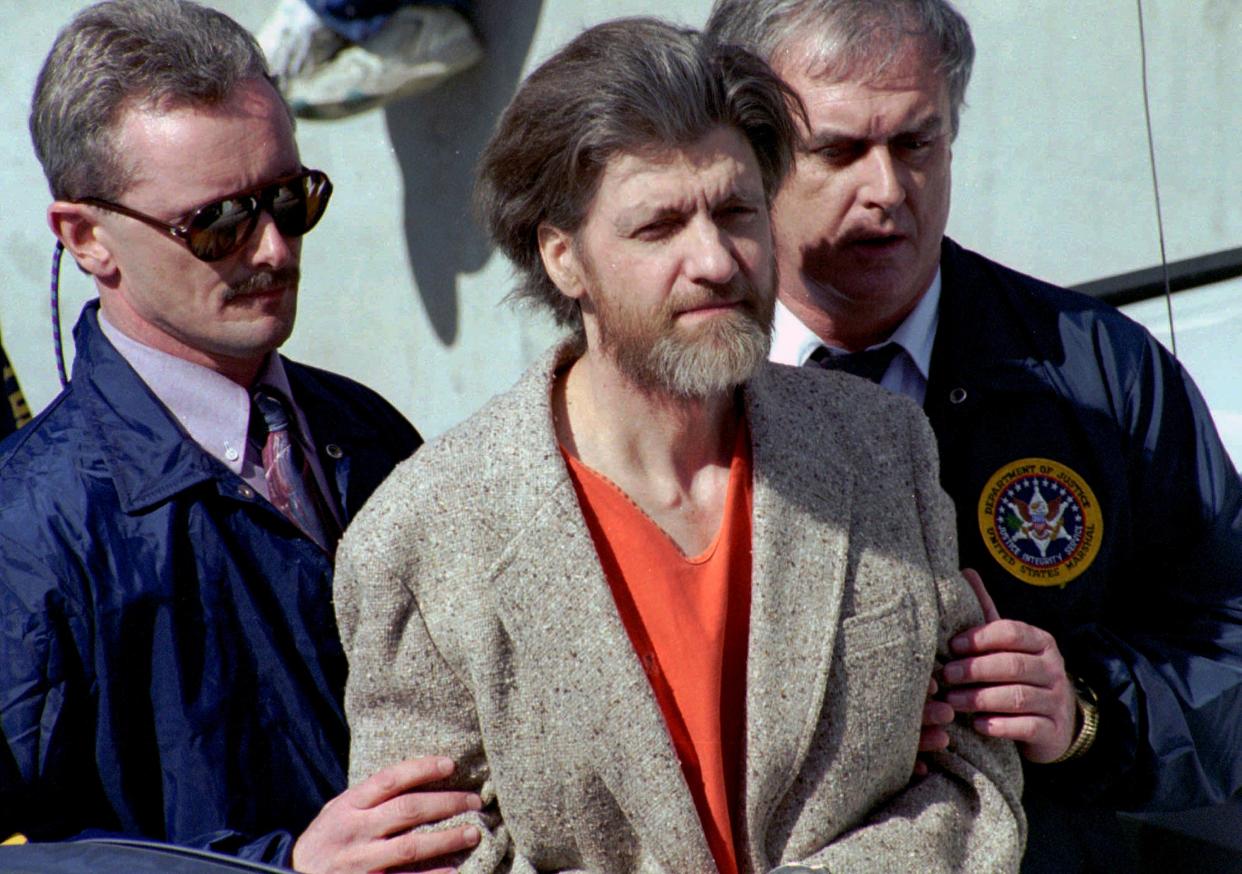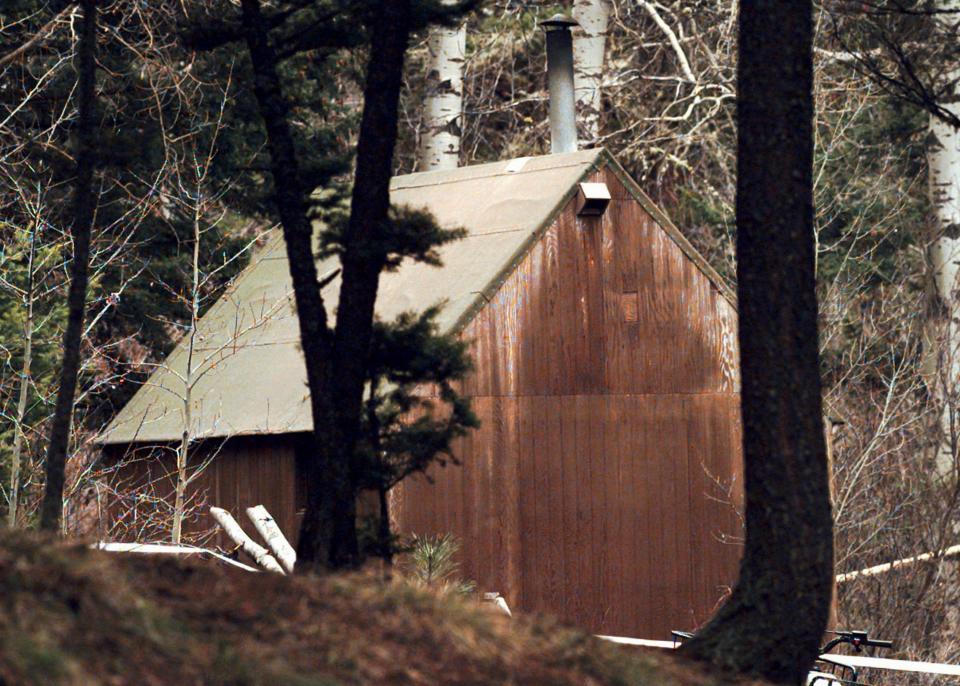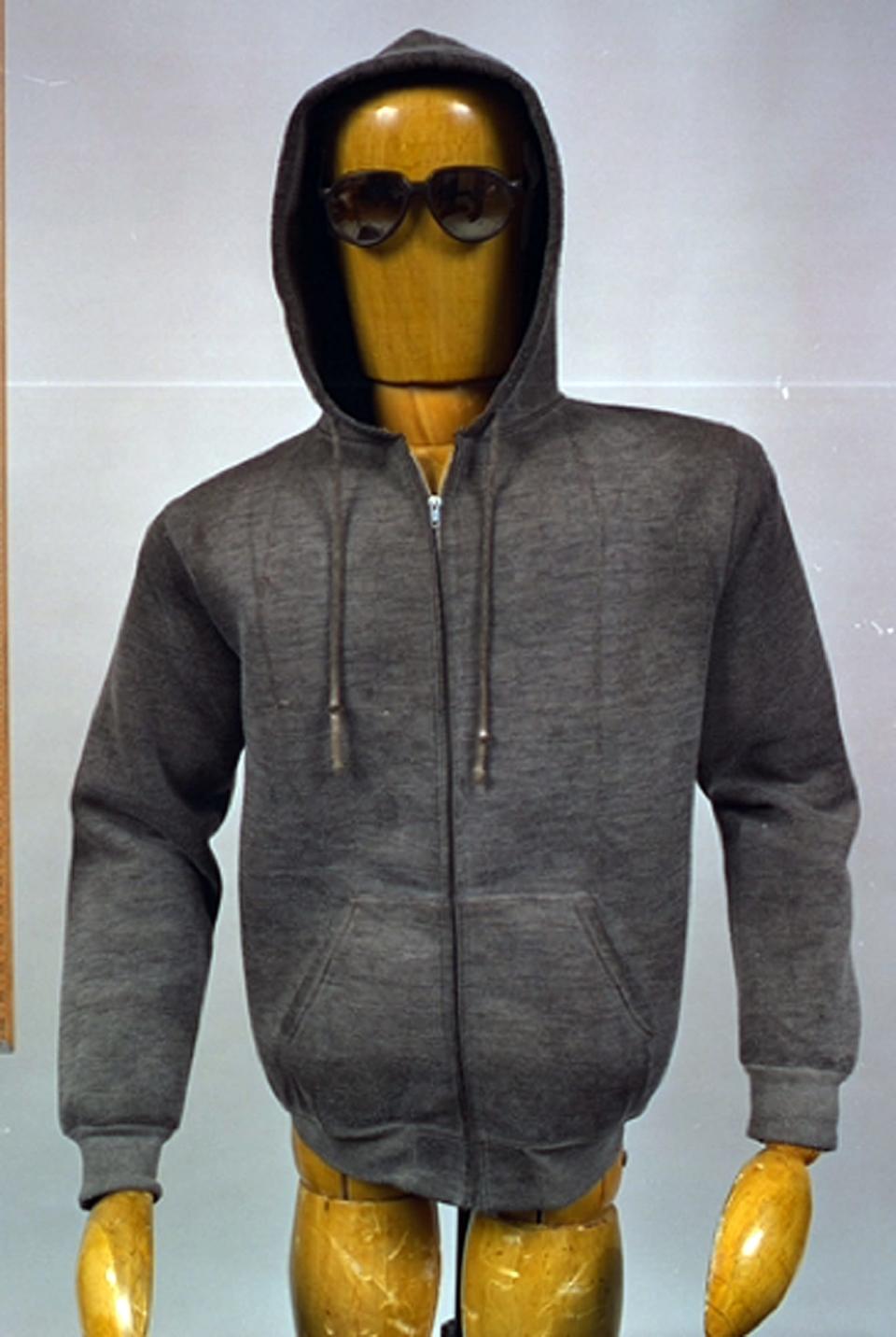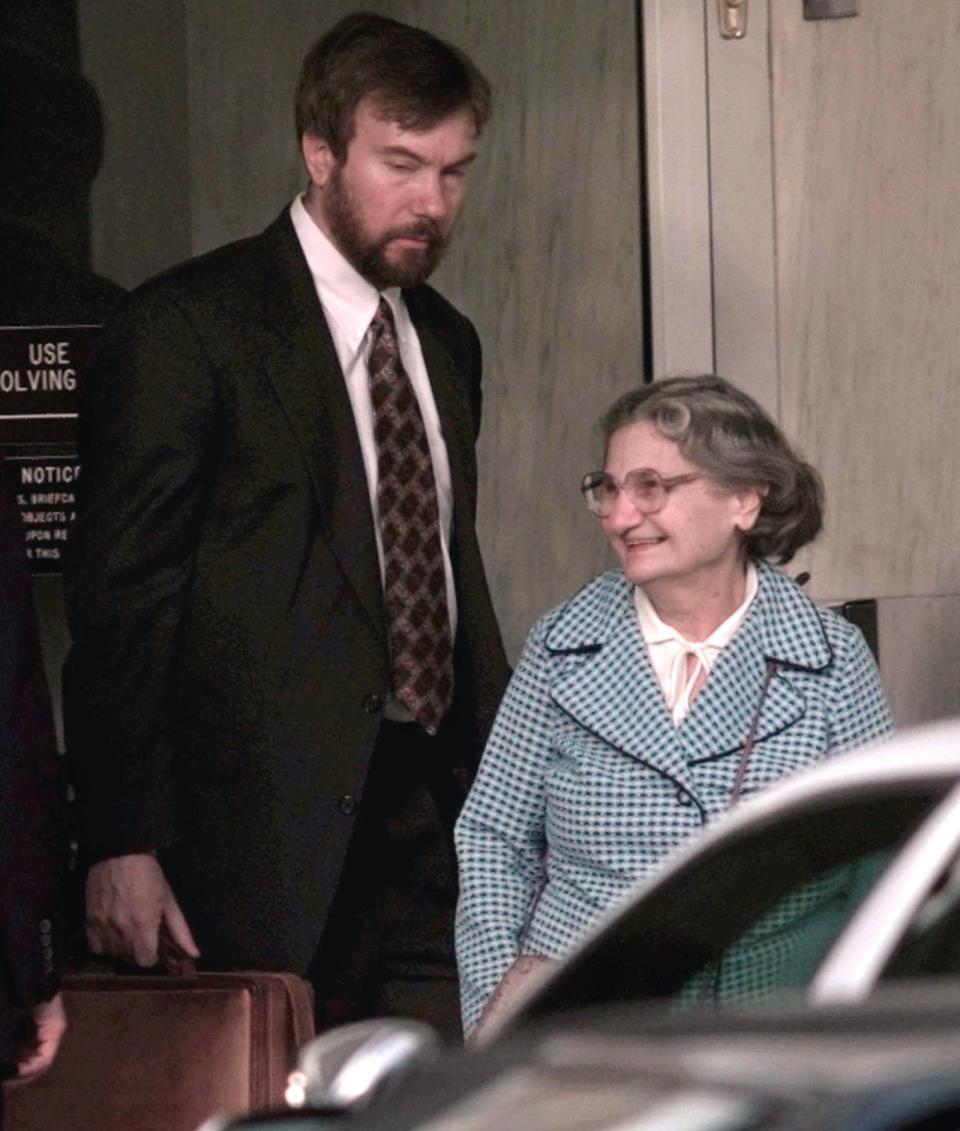Who was the 'Unabomber'? A look back at Ted Kaczynski, who killed three and died in prison

Theodore "Ted" Kaczynski, the man known as the "Unabomber" and one of the most destructive domestic terrorists in U.S. history, was found dead Saturday at a North Carolina prison medical facility at the age of 81.
Kaczynski was serving a life sentence for conducting an array of attacks using homemade bombs that he would send through the mail between 1978 and 1995. He was arrested by the Federal Bureau of Investigation in April 1996 and plead guilty to setting off 16 various explosions that killed three people and injured 23 others.
Here's a summary of the Unabomber's life and history of his bomb attacks.
Who was Ted Kaczynski, the Unabomber?
Kaczynski was born in 1942 in Chicago and was one of two children, with his younger brother David ultimately aiding in his arrest. Kaczynski graduated early from high school and was accepted into Harvard University at 16, where he graduated in 1962 with a bachelor's degree in mathematics.
He went on to earn master's and doctorate degrees in mathematics in 1964 and 1967, respectively, from the University of Michigan.
Following his graduation in 1967, Kaczynski became an assistant professor at the University of California, Berkeley, where he taught undergraduate geometry and calculus for two years before he resigned in 1969.
After completing his education, at 25, Kaczynski became the youngest assistant professor in the history of UC Berkeley when he was hired to teach undergraduate geometry and calculus in the fall of 1967. However, he resigned, without providing a reason, two years later.
Kaczynski returned to the Chicagoland area after resigning from Berkeley and lived with his parents until 1971, when he moved to a cabin in the woods near Lincoln, Montana.

The 'Unabomber': Convicted terrorist Ted Kaczynski has died in federal prison at age 81
What did the Unabomber do in his attacks?
In 1978, Kaczynski began attacking people with homemade bombs, some sent in the mail using the U.S. Postal Service and some hand-delivered by him.
He first target was Buckley Crist, who was a professor of engineering at Northwestern University. Crist realized that the package, which listed the return address as his and was in the parking lot of his office building, was not sent by him and alerted campus security, the FBI details. The bomb exploded when a security guard opened the package, and the guard received a hand injury.
Kaczynski proceeded to mail nine handmade pipe bombs to people for the next seven years, including workers at both United Airlines and American Airlines, as well as various academic administrators, according to History.com. Some people were seriously injured by the pipe bombs.

After the FBI code-name its investigation into the bombings "UNABOM," the media named Kaczynski, the "Unabomber," as he continued to carry out the attacks.
The first fatality caused by Kaczynski occurred in December 1985, when he sent a bomb to Hugh Scrutton, a computer store owner in Sacramento, California. Kaczynski committed his last attack on April 24, 1995, also in Sacramento. The attack resulted in the death of Gilbert Murray, who was president of the California Forestry Association, a lobbying group.
Police misconduct case: Largest settlement in US history over misconduct reached: $45M in Randy Cox case
What was the Unabomber Manifesto?
During the summer of 1995, Kaczynski sent his own manifesto, entitled "Industrial Society and Its Future," and letters to different publications, threatening to commit more bombing attacks if they did not publish the essay.
Both The New York Times and The Washington Post published the 35,000-word essay in September 1995 after U.S. officials decided it should be published.
Kaczynski's manifesto called for society to change, claiming that modern technology limits human power and freedom.
How was the Unabomber caught?
Kaczynski's run eventually ended when his brother, David, recognized the manifesto's ideas as being similar to the ideas of Kaczynski. David went to the FBI with his concerns and gave them letters between himself and his brother.
The FBI had been searching for Kaczynski for multiple years by the time David came to them. Kaczynski's letters helped detectives confirm that the manifesto and the letters had linguistic similarities, the FBI says.

Officers went to Kaczynski's Montana cabin with a search warrant in April 3, 1996, where they found him along with multiple bomb parts and ingredients. That same month, Kaczynski was indicted on 10 counts of illegally transporting, mailing, and using bombs along with three counts of murder. He plead guilty to all counts.
In May 1998, Kaczynski was sentenced to four life sentences and 30 years in prison for the bombings. During his time in prison, Kaczynski wrote and published two books.
Contributing: The Associated Press, Jeanine Santucci
More on crime: Death penalty in Florida: Here’s what to know about executions, death row
This article originally appeared on USA TODAY: Who was 'Unabomber' Ted Kaczynski and what did the late terrorist do?

